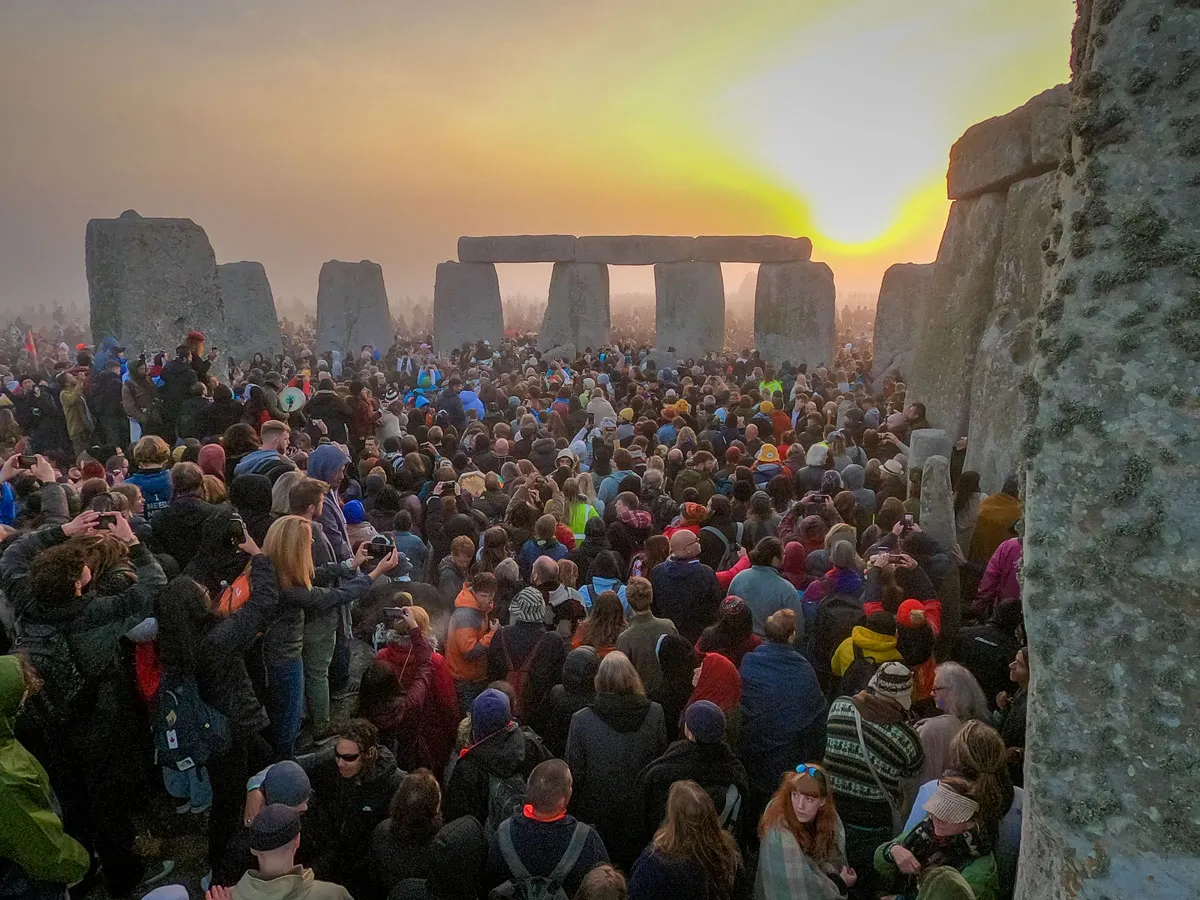Get out those sandals, BBQs, and sun hats because the summer solstice 2023 is finally here! Whether you like it or not, we’re now halfway through the year, with the summer solstice marking the astronomical start of the season.
More specifically, the summer solstice signals an important moment in the calendar for many and it’s no different in 2023. But when is it exactly? What does it mean? We’ve got these answers and more below.
Read on to find out how the event is marked around the world, what the difference between an equinox and a solstice is, and to see if any other planets have solstices or not.
When is the summer solstice in 2023?
The summer solstice in 2023 will take place today, Wednesday 21 June, at precisely 3:58pm BST in the UK and 10:58am ET / 7:58am PT in the US. Contrary to popular belief, the solstice is an exact moment and not the entire day.
The event takes place on the first day of the astronomical summer season and marks the exact point the northern hemisphere is pointing directly towards the Sun.
It also marks the longest day of the year, with the highest number of daylight hours seen in a single day in 2023. Expect at least 16 hours of daylight in the UK and in the US.
This is the first of two solstices during the year, with the second taking place in December. The summer solstice will always take place between 20-22 June. It just so happens to be falling on the same day as in 2022 this time around.
When is sunrise for the summer solstice?
On Wednesday 21 June, the day of the summer solstice, sunrise will be at 4:43am in London (BST). Times will vary slightly in the UK, with Edinburgh's sunrise at 4:26am (BST).
In the US, the sunrise will depend on your location.
- New York City summer solstice sunrise time: 5:25am (EDT)
- Austin, Texassummer solstice sunrise time: 06:29 (CDT)
- Los Angeles, California solstice sunrise time: 05:42 (PDT)
Counterintuitively, even though 21 June is the longest day of the year, it's not the day with the earliest sunrise. "The earliest sunrise actually occurs 4 days earlier, and the latest sunset occurs 3 days later," Dr Darren Baskill, an astrophotographer and astronomy lecturer at the University of Sussex, says. "This slight difference is caused by the Earth orbiting the Sun not in a circle, but in a slight ellipse."
What is the summer solstice?
The summer solstice takes place at the exact moment the Sun reaches its highest point in the sky, which is when the northern hemisphere is tilted most towards the Sun. Essentially, it marks the point when the Sun’s rays hit this part of the Earth most directly.
"The summer solstice occurs for the northern hemisphere when the Earth moves into such a position that its North Pole is pointing in the direction of the Sun, making the Sun high in the sky," says Baskill.
"At the same time, the South Pole of the Earth is pointing away from the Sun, and so the southern hemisphere has their winter solstice on the same day."
The Earth’s axis has a tilt of around 24°, relative to its orbit around the Sun. On 21 June, the northern hemisphere is tilted at its closest point towards the sun and the southern hemisphere is tilted its furthest away from the Sun, which is why the northern and southern hemispheres have opposite seasons to one another.
This means that the southern hemisphere will be celebrating its winter solstice at the same time as our summer event and vice versa.
Because it is related to tilt and not orbit distance, the Earth is actually closest to the Sun (the perihelion) in January and furthest from it (the aphelion) in July.
The summer solstice is not necessarily the hottest day of the year. Usually, the hottest day of the year is in July or August. This is because oceans and land masses release the heat absorbed from the longer days back into the atmosphere.
Why is the Earth tilted?
We get a summer solstice because the Earth's North Pole is tilted at around 24° from the vertical, compared with its orbit around the Sun. For the same reason, the Arctic Circle gets the Midnight Sun: on the summer solstice, and for longer further north, the Sun is visible above the horizon all night long.
But where does the Earth get its tilt?
"Go back 4.5 billion years, and our infant Solar System was a violent place, with vast numbers of large asteroids hitting the young planets," says Baskill.
"One particularly large collision between the Earth and an object half its size, lead to the creation of the Moon – that's the only way we know for such a relatively large moon to end up in such an orbit around the Earth.
"Today's tilt of the Earth is caused by the sum of all of the impacts that were big enough to affect the tilt, including the impact that formed the Moon."
How is the summer solstice marked around the world?
The summer solstice is marked around the world by different groups and cultures, but the most famous event arguably takes place at Stonehenge in the UK.
While many mysteries remain about the ancient stone circle, we do know that the monument is structured to mark the position of the rising sun at the solstices (whether that was its original intention or not).As such, 21 June 2023 marks the only day the site has free (managed) open access for tourists and those looking to take in the special and sacred event.

Other summer solstice events around the world include Midsummer, which is an important date in Sweden and the other Scandinavian nations.
What’s the difference between an equinox and a solstice?
The main difference between an equinox and a solstice is the number of daylight hours we receive. The summer solstice marks the longest day and the winter solstice marks the shortest. Both equinoxes (spring and autumn) land on days with day and night lengths at their closest to one another.
An equinox, essentially, is when the Earth is halfway between the two solstices and when the Sun crosses the celestial equator. The spring and autumn equinoxes take place when the Earth’s axis is not tilting away or toward the Sun.
Do any other planets have solstices?
Yep, other planets do indeed have solstices. Just the same as on Earth, when any planet’s northern pole reaches its maximum tilt towards the Sun, the summer solstice happens and its winter solstice takes place when the southern pole does the same.
Ours isn’t the only planet to have defined seasons, either. Mars, for example, has a spin axis of 25.2 degrees (similar to that of Earth’s) but its seasons last roughly twice as long as our own and are less easily defined. Also, Martian seasons are complicated by the planet’s elliptical orbit, making the northern hemisphere more temperate than the southern hemisphere.
Dates and times of future summer solstices, BST
- 2024:20 June, 9:51pm
- 2025:21 June, 3:42am
- 2026:21 June, 9:24am
- 2027:21 June, 3:10pm
- 2028:20 June, 9:01pm
- 2029:21 June, 2:48am
- 2030:21 June, 8:31am
About our expert, Dr Darren Baskill
Darren is an outreach officer and lecturer in the department of physics and astronomy at the University of Sussex. He previously lectured at the Royal Observatory Greenwich, where he also initiated the annual Astronomy Photographer of the Year competition.
